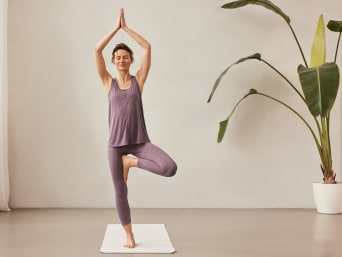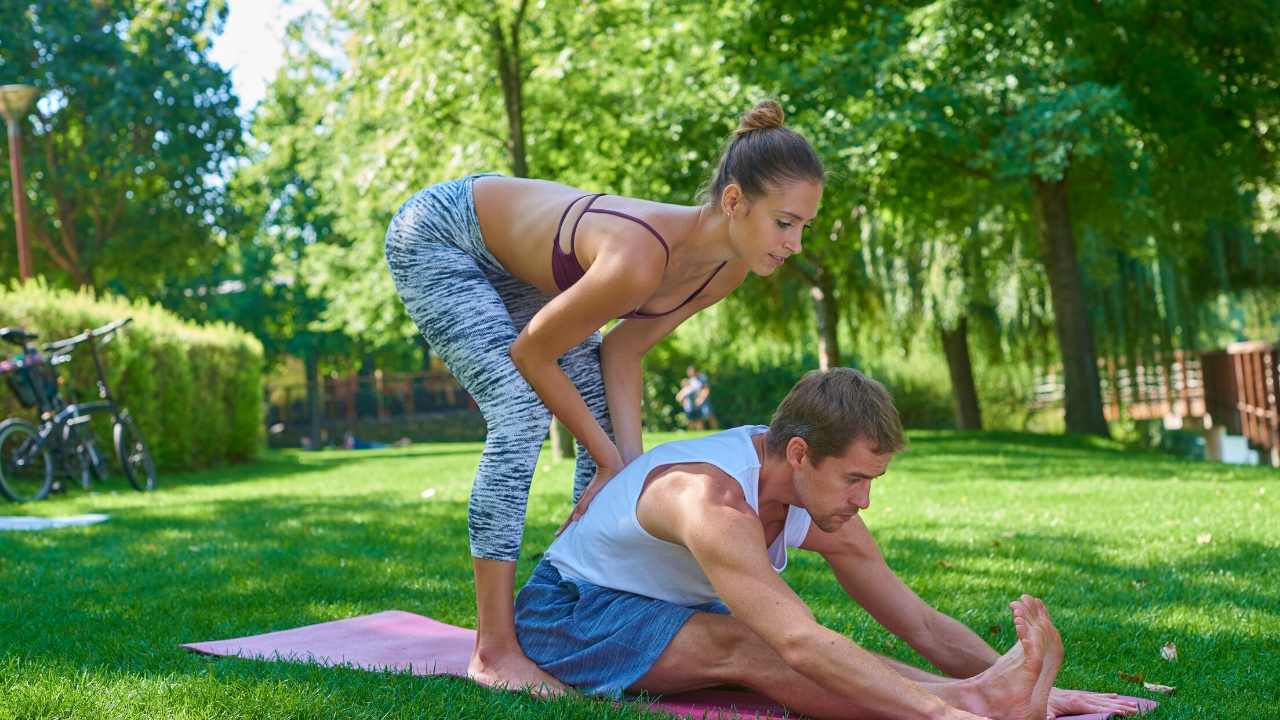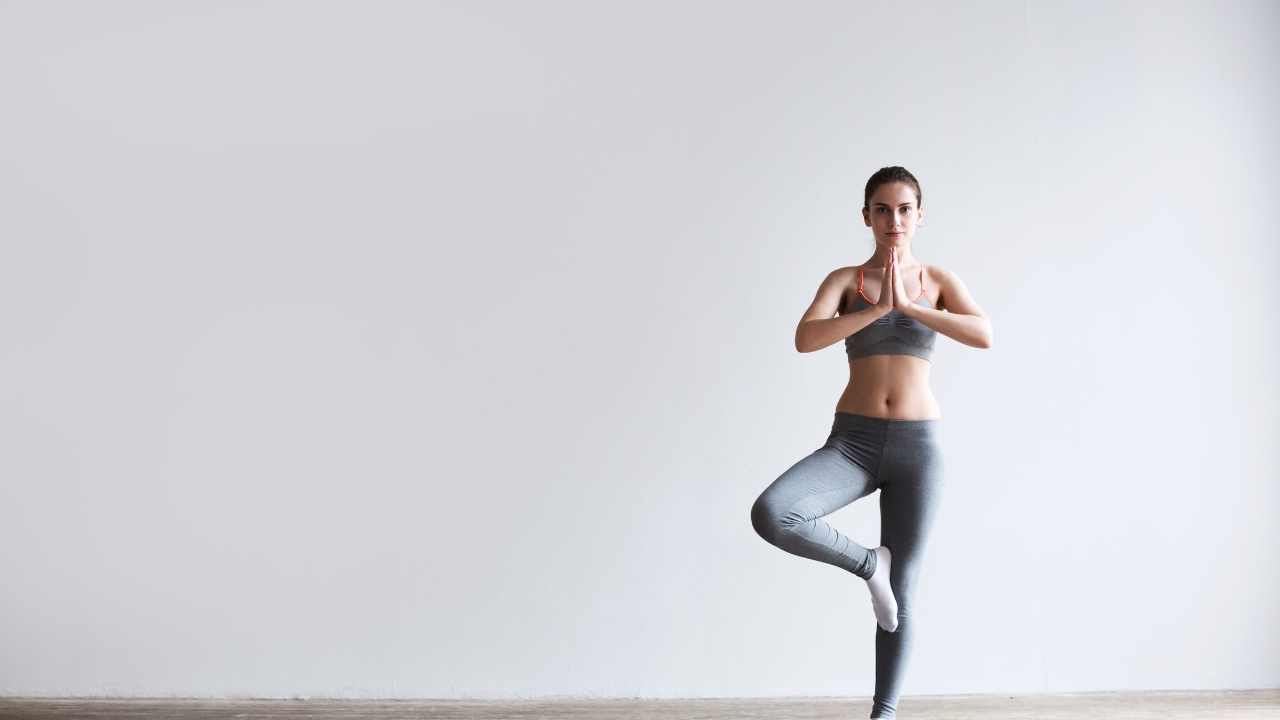
Yoga is more than just poses and breathing exercises. Yoga encompasses a complex system of yogic sciences. These practices have been in existence for thousands years and are based upon extensive testing. They must be capable of reproducing results in order to prove their effectiveness. You can read on to learn more about the basics of yoga science. But what exactly are the yogic disciplines? And how can they be of benefit to you? This information will help you understand the importance of yoga.
Yoga as a discipline
Yoga's goal is to cleanse the mind. This will in turn allow the Atma (or soul) to manifest as Brahman. Our unrighteous actions in this life as well as previous lives result in mental impurities. As the Gita states, the world has sorrows. But, there are ways to overcome them and regain your divinity. Yoga will cleanse the mind, but this is something we don't realize.
Asanas can be described as poses that increase flexibility. They improve blood circulation, detoxify the body, and enhance the function of all body systems. While pranayama exercises are good for the respiratory system, some help the body detoxify. Matsyendrasana (a yoga pose that massages one's abdominal organs) is a very well-known and popular pose. You can also try adhomanasana or sukhasana.

Yoga as a science
Yoga is an ancient art form. It has a wealth of knowledge based upon the Rishis' experiences and experiments. These texts include the Vedas (Upanishads), Puranas (Puranas), Itihasas (Shasstras), and Puranas. Any person who truly cares can confirm their validity. Yoga has many benefits, and this ancient art form is well-known. Yoga offers many other benefits than the physical and mentally.
Yoga can help people suffering from stress-related and psychosomatic illnesses, according to some experts. It has been reported that yoga is more effective at relieving anxiety and pain than any other form of exercise. Yoga is slow and done with awareness, so there is less chance of injury. However, there are some poses that can cause injury. It is important to be aware that yoga practitioners are not always safe. Yoga can be helpful for psychological disorders like anxiety, depression, and insomnia.
Yoga as a means to attain enlightenment
All yogis seek enlightenment. Enlightenment can be described as a state that allows you to become one and cease identifying yourself with your emotions. Although enlightenment is possible in many different ways, it generally responds to universal principles. You can attain spiritual enlightenment by using yoga as a spiritual discipline. This includes meditation, yoga asanas, and asanas.
Yoga can help you integrate your left and right personality. It helps to integrate the corpus callosum and connect it to its right side. This allows you to experience a fuller, more authentic life. It is possible to achieve this goal, even though it can be hard for many in today's world. Yoga practices can help you achieve enlightenment.

Yoga as a method of meditation
The yogic sciences emphasize hatha yoga and asanas, which are techniques to create stillness in the body. These techniques will naturally produce a stillness of the mind. Our minds don't like being still. The key is to pay attention to the movements of your body and how you speak. This will help you become more still, more open to meditation. What are the best techniques for achieving this?
Yoga encourages conscious action by allowing the mind to suspend its fluctuations. Higher quality of life leads to less suffering and greater quality. Studies have shown that people in chronic pain can benefit from yogic techniques to increase their QOL. Yoga has been around for thousands of year and is an ideal way to keep your body and mind at their best. How do you choose the right class for you?
FAQ
What happens if I stop practicing yoga?
It's common to lose interest in an activity over time. Yoga may cause stiffness in your body if you stop regularly practicing it. Poor posture, lack or aging may all lead to stiffness.
You might consider taking a few more classes if your flexibility becomes less apparent over time. It's important to maintain a regular routine. Exercise helps strengthen your bones and muscles, so ensure you get enough sleep and eat well.
How long should a Yoga session last?
Yoga sessions last between 45 minutes- 1 hour. The length of time depends on the type of yoga you're doing. For strength-building exercises, it would be sufficient to last 45-60 minutes. An hour or more may be necessary if you want to meditate or relax.
The length also varies depending on what kind of yoga class you're taking - some classes focus on moving quickly while others emphasize slow, deep stretches.
What foods should I avoid after practicing yoga?
You may experience a decrease in energy levels if you avoid certain foods. It can cause you to feel gassy or cramps in your stomach. If you feel tired after practice, you may want to eat something light and nourishing.
Can I do yoga at home?
Absolutely! You can do yoga at home in many ways. For example, videos, DVDs/CDs, CDs, magazines and apps can all be used to practice yoga at your home.
YouTube even offers free online yoga videos. The best way to learn is with a skilled instructor.
What do I need to start practicing yoga?
To lie down, you will need a mat (some can be folded), loose clothing and a towel/blanket to place underneath your head.
You may also need props like blocks, straps or bolsters, blankets, towels, or blankets for specific poses.
In general, however you won't need anything. To start yoga, you must be motivated to make positive changes in one's life and willing to put in the effort.
What happens if you practice yoga every day?
You feel calm, relaxed and center. It can improve your posture, balance, flexibility, and overall health.
You become more aware how your body feels as you move. This awareness helps you to be more mindful and aware of your own body.
Yoga also improves your concentration.
Your mind becomes more sharp and clear. It calms the nervous system. It reduces stress levels. It promotes peace and well-being.
Do I need warm up before I do yoga
No. It's not necessary to warm-up before doing a yoga session.
Stretching before you go to the gym can help ease stiff muscles.
Statistics
- A 2020 review of 27 studies (1,805 total participants) of yoga interventions in children or adolescents found reductions in anxiety or depression in 70 percent of the studies, with more promising results for anxiety. (nccih.nih.gov)
- Lock in 25% off your Founding Member rate. (corepoweryoga.com)
- Start your Fall off right with 20% off All Access Membership when you sign up by 9/25! (corepoweryoga.com)
- The American Psychological Association recently shared that 84% of American adults feel the impact of prolonged stress (5). (healthline.com)
- About one in seven U.S. adults practiced yoga in the past 12 months, according to a 2017 national survey. (nccih.nih.gov)
External Links
How To
Is yoga a great workout?
Yoga is not just for people looking to lose weight. Yoga is not just for those who want to lose weight. It helps them develop flexibility and balance.
Yoga is not just exercise; instead, it's an art form. The poses can be used to relax or meditate. They allow us to improve our posture and concentration as well as our breathing.
A "yogi" is someone who practices yoga. Yogis follow various forms of yoga, including Hatha, Ashtanga, Iyengar, Vinyasa, Bikram, Kundalini, Yin Yang, and Restorative.
Although there are many styles of yoga, they all share the same goals. Each style focuses on different aspects. You can choose from meditation, pranayama or Hatha yoga.
These yoga moves don't require any equipment
-
Sun Salutation-This series of 12 poses starts with a forward bending, followed by 10 different positions.
-
Warrior pose - This is when you hold a stick or a staff and take a warrior's pose.
-
Triangle Pose-This pose requires you to lift one leg behind you while bending at the knee.
-
Standing Forward Bend: This pose involves sitting straight up on the ground and folding forward at your waist.
-
Seated Twist: This is a pose that can be done while seated on a mat or in a chair.
-
Cobra Pose- This is when you are lying flat on your stomach with your arms extended overhead.
-
Child's posing - This position is performed while facing up on the ground.
-
Cat/Cow Pose: This combination of a cow and cat pose is called the Cat/Cow Pose. Keep your head down and raise your upper body above the ground. Now roll to your side, and then place your hands below your shoulders.
-
Head Tilt: This is when you tilt your head back and keep your eyes closed.
-
Shoulder Stand - This pose is standing upright with feet and arms raised above your head.
-
Tree Pose- You can achieve this pose by kneeling on one knee with your hands under you shoulders.
-
Bow Pose - This pose is completed by bending forward from the hips and placing your palms on the ground.
-
The corpse pose is held for five to ten minutes.
-
Mountain Pose – This is a pose known as mountain pose. Your spine should be straightened and you must stand tall.
-
Legs Up the Wall Pose - This pose is executed by hanging upside-down from a wall.
-
Side Angle Pose: This pose involves leaning against a wall, putting your right hand next to the wall, and then extending your left arm.
-
Plank Position: This is when your legs are bent at the waist and your arms extend out to one side.
-
Bridge Pose – Balance on your elbows while balancing on the toes in this pose.
-
Reverse Table Top Pose - This pose is attained by lying on your tummy and reaching your arms toward the ceiling.
-
Handstand - This requires strength and balance. Hold yourself in between two walls or use a door frame to do this pose.
-
Half Moon Pose – Also known as Hero Pose, this pose is also called Hero Pose. This is achieved by standing on your hands, and toes.
-
Headstand (or Handstand), - This pose requires great balance and strength. You can perform this pose either on a wall or using a doorframe.
-
Forearm Balance -- This pose involves your forearms resting on top of a tabletop.
-
Spinal twist - This is a pose where your belly lies while your arms reach your arms.
-
Supported bound angle pose - This pose needs support and balance. For this pose, you will need to find something sturdy like a branch from a tree or an old beam to support you.
-
Wide Leg Forward Fold: This position is achieved by stretching your legs apart and touching the tips of your toes.
-
Single Pigeon Pose: This is a variation of the forward-folding wide-leg position, but with only one leg.
-
Extended Puppy Dog Poses are very relaxing. You can do this by extending your legs and bending your knees.
-
Seated Forward Bend - This pose is sitting cross-legged and stretching your hamstrings and calves.
-
Crow Pose - This pose is difficult to do but very rewarding once you master it. This is achieved by elevating your arms above your head, and then lowering your arms until they are parallel to the ground.